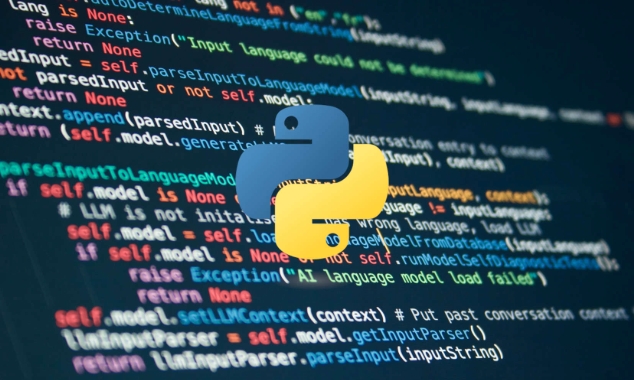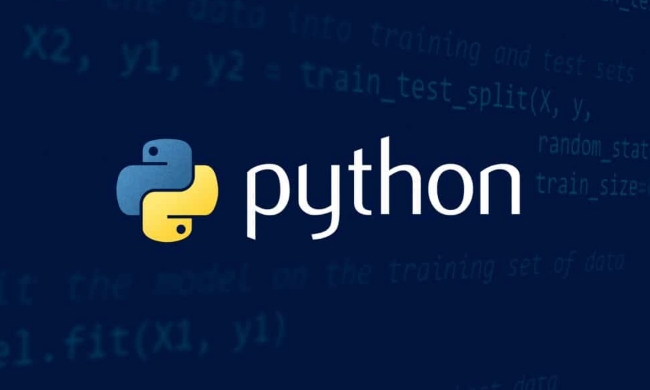Data anonymization can be achieved through replacement, differential privacy and generalization, and Python provides corresponding tools. Replace the available hashlib fuzzy fields, such as hashing the name and mailbox; differential privacy protects individual information by adding noise, such as using PyDP to calculate the average value with noise; generalization abstracts the specific value into a range, such as converting age to age group. Structured data is suitable for replacement, generalization and differential privacy. Unstructured data can use entity replacement or NLP technology. Real-time data flow prioritizes lightweight methods, while combining access control and encrypted storage to ensure privacy.

Data anonymization is becoming increasingly important in privacy protection, and Python, as a flexible programming language, provides a variety of tools and methods to achieve this. If you need to process sensitive information in your project, such as user data, medical records or financial data, anonymization using Python is a practical and efficient choice.

Below are some common anonymization methods and implementation ideas that are suitable for the needs of different scenarios.
Data desensitization: replacement and fuzzification
The most basic anonymization method is to replace sensitive fields with fuzzy values, such as replacing names with numbers, or replacing real addresses with common values (such as "a certain city and a certain district").

- Replace field : The original value can be replaced with dictionary mapping or randomly generated unique identifiers.
- Fuzzing : For example, precise birthday to year, or keep geographical location to city level.
For example, if you have a user table with a name and email address, you can handle it like this:
import pandas as pd
import hashlib
def anonymize_name(name):
return hashlib.sha256(name.encode()).hexdigest()[:10]
df = pd.read_csv("users.csv")
df["name"] = df["name"].apply(anonymize_name)
df["email"] = df["email"].apply(lambda x: f"user_{hashlib.sha256(x.encode()).hexdigest()[:8]}@example.com")This method is suitable for situations where you do not want to completely delete the original information but do not want to expose the real data.

Differential Privacy: Add noise to protect individual privacy
Differential privacy is a more advanced anonymization technology that protects individual information by adding noise to the data. Although it is a bit more complicated to implement, data availability can be maintained in statistical analysis.
PyDP in Python or IBM Differential Privacy Library both provide some basic interfaces to achieve this.
For example, use PyDP to calculate the average value with noise:
import pydp as dp from pydp.algorithms.laplacian import BoundedMean data = [23, 45, 34, 27, 30, 36] dp_mean = BoundedMean(epsilon=0.5, lower_bound=18, upper_bound=100) print(dp_mean.compute(data))
The key here is to choose the right epsilon value, which determines the balance between privacy protection strength and data accuracy.
Data generalization: abstract concrete values into ranges
Generalization is to replace specific values with a wider range. For example, changing age from a specific number to age group (such as 20-30 years old), or upgrading geographical location from street level to city level.
This approach is very common in medical data or demographics.
A simple generalization function:
def generalize_age(age):
if age < 20:
return "Under 20"
elif 20 <= age < 30:
return "20-29"
elif 30 <= age < 40:
return "30-39"
else:
return "40"Using pandas in combination can quickly process the entire dataset.
Recommendations for choosing anonymization strategy
Facing different data types and usage scenarios, anonymization strategies should also be different:
- Structured data (such as tables) : suitable for use of replacement, generalization, and differential privacy.
- Unstructured data (such as text) : Entity replacement or NLP technology can be considered to identify and replace personal information.
- Real-time data flow : performance needs to be considered, and lightweight desensitization methods can be preferred.
In addition, anonymization is not omnipotent. It must be used in combination with access control, encrypted storage and other means to truly protect privacy.
Basically that's it. Python provides enough tools to achieve different levels of anonymization needs. The key is to choose the right method based on the specific scenario and find a balance between data availability and privacy protection.
The above is the detailed content of Python for Anonymization Techniques. For more information, please follow other related articles on the PHP Chinese website!

Hot AI Tools

Undress AI Tool
Undress images for free

Undresser.AI Undress
AI-powered app for creating realistic nude photos

AI Clothes Remover
Online AI tool for removing clothes from photos.

Clothoff.io
AI clothes remover

Video Face Swap
Swap faces in any video effortlessly with our completely free AI face swap tool!

Hot Article

Hot Tools

Notepad++7.3.1
Easy-to-use and free code editor

SublimeText3 Chinese version
Chinese version, very easy to use

Zend Studio 13.0.1
Powerful PHP integrated development environment

Dreamweaver CS6
Visual web development tools

SublimeText3 Mac version
God-level code editing software (SublimeText3)
 Polymorphism in python classes
Jul 05, 2025 am 02:58 AM
Polymorphism in python classes
Jul 05, 2025 am 02:58 AM
Polymorphism is a core concept in Python object-oriented programming, referring to "one interface, multiple implementations", allowing for unified processing of different types of objects. 1. Polymorphism is implemented through method rewriting. Subclasses can redefine parent class methods. For example, the spoke() method of Animal class has different implementations in Dog and Cat subclasses. 2. The practical uses of polymorphism include simplifying the code structure and enhancing scalability, such as calling the draw() method uniformly in the graphical drawing program, or handling the common behavior of different characters in game development. 3. Python implementation polymorphism needs to satisfy: the parent class defines a method, and the child class overrides the method, but does not require inheritance of the same parent class. As long as the object implements the same method, this is called the "duck type". 4. Things to note include the maintenance
 Python Function Arguments and Parameters
Jul 04, 2025 am 03:26 AM
Python Function Arguments and Parameters
Jul 04, 2025 am 03:26 AM
Parameters are placeholders when defining a function, while arguments are specific values ??passed in when calling. 1. Position parameters need to be passed in order, and incorrect order will lead to errors in the result; 2. Keyword parameters are specified by parameter names, which can change the order and improve readability; 3. Default parameter values ??are assigned when defined to avoid duplicate code, but variable objects should be avoided as default values; 4. args and *kwargs can handle uncertain number of parameters and are suitable for general interfaces or decorators, but should be used with caution to maintain readability.
 Explain Python generators and iterators.
Jul 05, 2025 am 02:55 AM
Explain Python generators and iterators.
Jul 05, 2025 am 02:55 AM
Iterators are objects that implement __iter__() and __next__() methods. The generator is a simplified version of iterators, which automatically implement these methods through the yield keyword. 1. The iterator returns an element every time he calls next() and throws a StopIteration exception when there are no more elements. 2. The generator uses function definition to generate data on demand, saving memory and supporting infinite sequences. 3. Use iterators when processing existing sets, use a generator when dynamically generating big data or lazy evaluation, such as loading line by line when reading large files. Note: Iterable objects such as lists are not iterators. They need to be recreated after the iterator reaches its end, and the generator can only traverse it once.
 Python `@classmethod` decorator explained
Jul 04, 2025 am 03:26 AM
Python `@classmethod` decorator explained
Jul 04, 2025 am 03:26 AM
A class method is a method defined in Python through the @classmethod decorator. Its first parameter is the class itself (cls), which is used to access or modify the class state. It can be called through a class or instance, which affects the entire class rather than a specific instance; for example, in the Person class, the show_count() method counts the number of objects created; when defining a class method, you need to use the @classmethod decorator and name the first parameter cls, such as the change_var(new_value) method to modify class variables; the class method is different from the instance method (self parameter) and static method (no automatic parameters), and is suitable for factory methods, alternative constructors, and management of class variables. Common uses include:
 How to handle API authentication in Python
Jul 13, 2025 am 02:22 AM
How to handle API authentication in Python
Jul 13, 2025 am 02:22 AM
The key to dealing with API authentication is to understand and use the authentication method correctly. 1. APIKey is the simplest authentication method, usually placed in the request header or URL parameters; 2. BasicAuth uses username and password for Base64 encoding transmission, which is suitable for internal systems; 3. OAuth2 needs to obtain the token first through client_id and client_secret, and then bring the BearerToken in the request header; 4. In order to deal with the token expiration, the token management class can be encapsulated and automatically refreshed the token; in short, selecting the appropriate method according to the document and safely storing the key information is the key.
 What are Python magic methods or dunder methods?
Jul 04, 2025 am 03:20 AM
What are Python magic methods or dunder methods?
Jul 04, 2025 am 03:20 AM
Python's magicmethods (or dunder methods) are special methods used to define the behavior of objects, which start and end with a double underscore. 1. They enable objects to respond to built-in operations, such as addition, comparison, string representation, etc.; 2. Common use cases include object initialization and representation (__init__, __repr__, __str__), arithmetic operations (__add__, __sub__, __mul__) and comparison operations (__eq__, ___lt__); 3. When using it, make sure that their behavior meets expectations. For example, __repr__ should return expressions of refactorable objects, and arithmetic methods should return new instances; 4. Overuse or confusing things should be avoided.
 How does Python memory management work?
Jul 04, 2025 am 03:26 AM
How does Python memory management work?
Jul 04, 2025 am 03:26 AM
Pythonmanagesmemoryautomaticallyusingreferencecountingandagarbagecollector.Referencecountingtrackshowmanyvariablesrefertoanobject,andwhenthecountreacheszero,thememoryisfreed.However,itcannothandlecircularreferences,wheretwoobjectsrefertoeachotherbuta
 Python `@property` decorator
Jul 04, 2025 am 03:28 AM
Python `@property` decorator
Jul 04, 2025 am 03:28 AM
@property is a decorator in Python used to masquerade methods as properties, allowing logical judgments or dynamic calculation of values ??when accessing properties. 1. It defines the getter method through the @property decorator, so that the outside calls the method like accessing attributes; 2. It can control the assignment behavior with .setter, such as the validity of the check value, if the .setter is not defined, it is read-only attribute; 3. It is suitable for scenes such as property assignment verification, dynamic generation of attribute values, and hiding internal implementation details; 4. When using it, please note that the attribute name is different from the private variable name to avoid dead loops, and is suitable for lightweight operations; 5. In the example, the Circle class restricts radius non-negative, and the Person class dynamically generates full_name attribute






